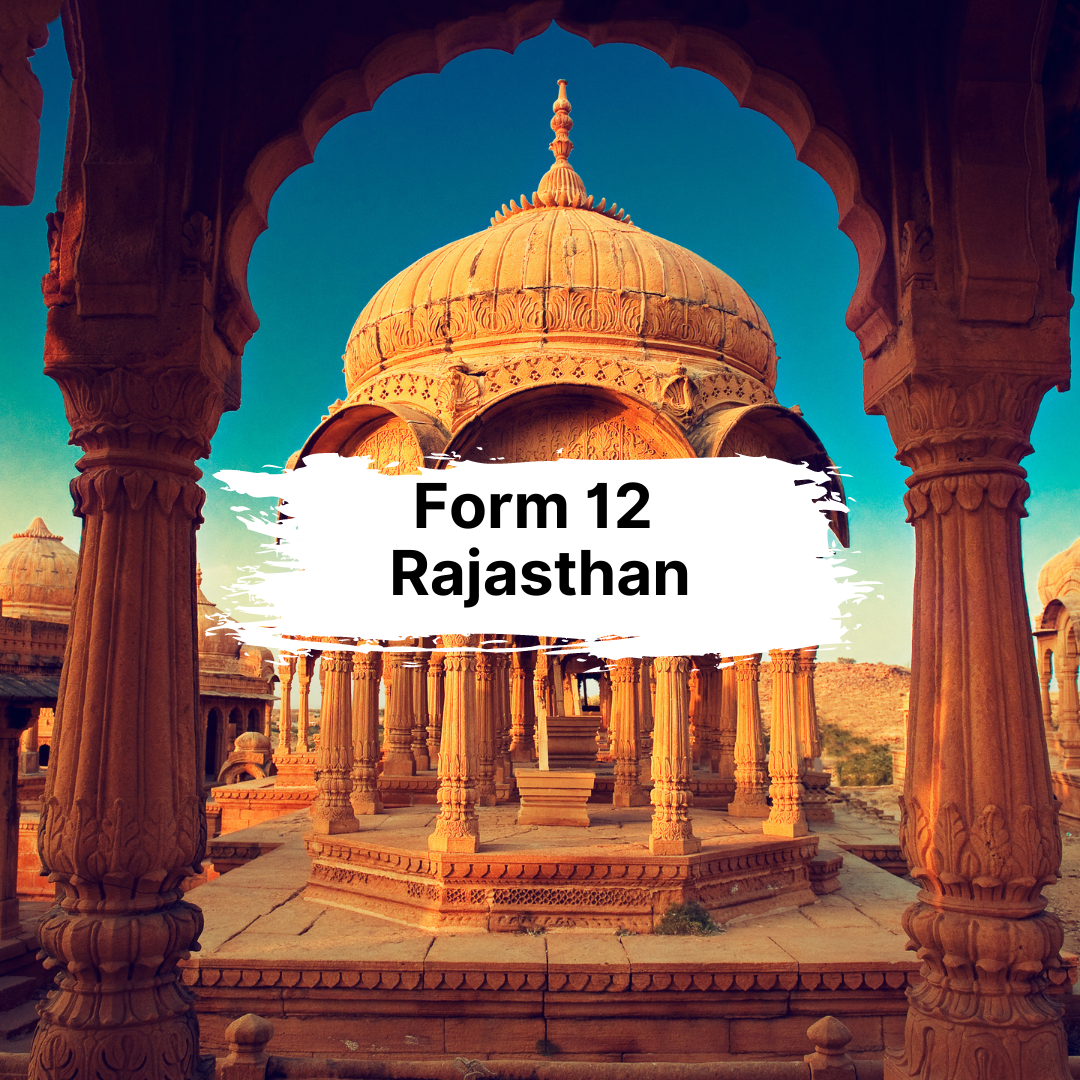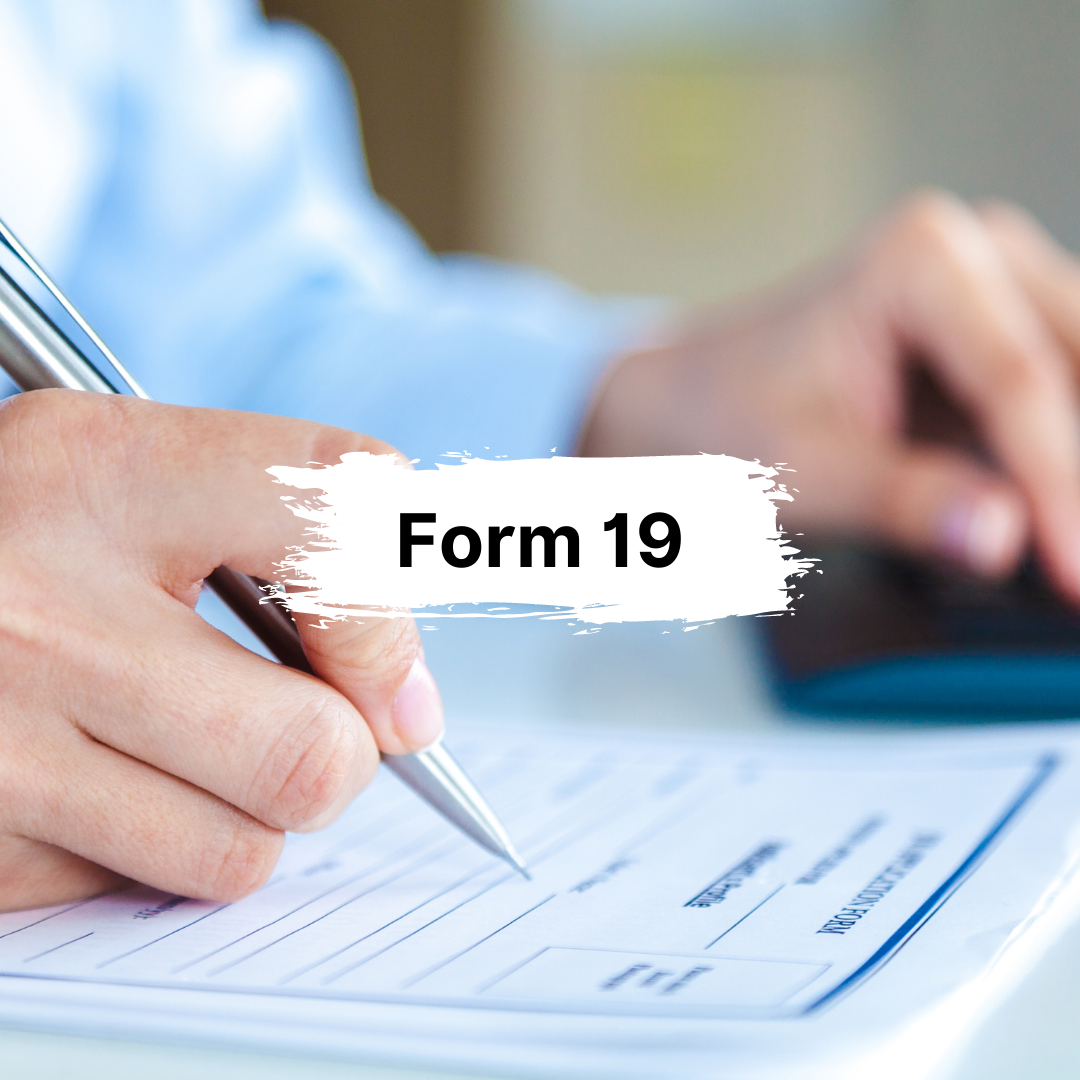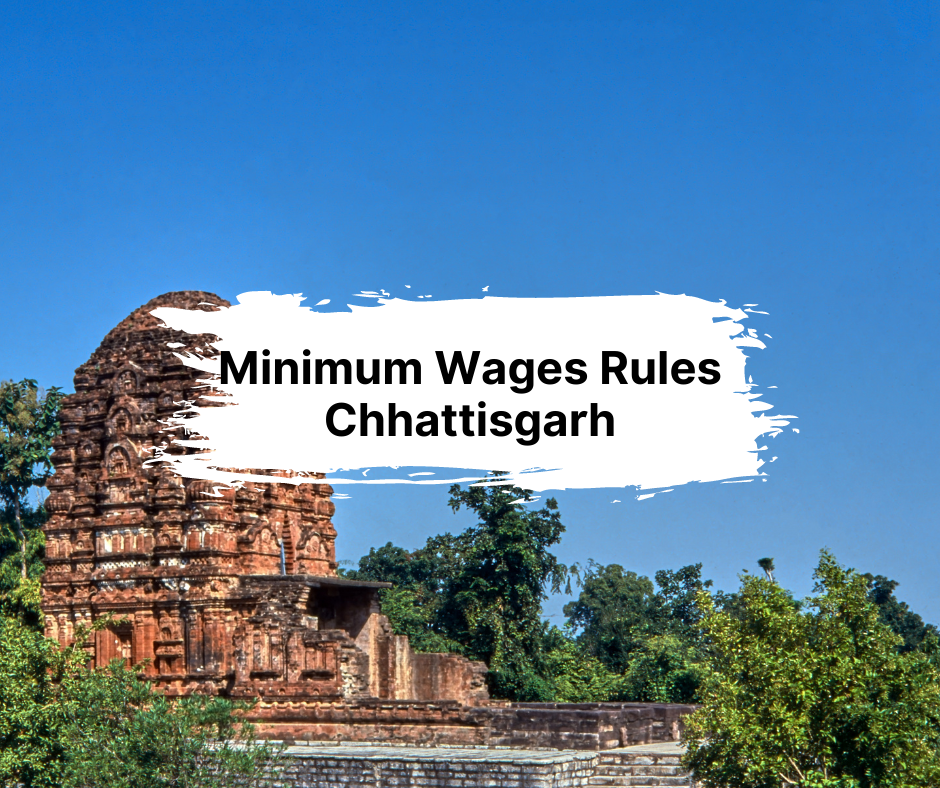Did you know that individuals in India owned about 14 trillion Indian rupees in employee provident funds in the fiscal year 2020? It is a massive increase from the previous year. It's because employees and employers both pay into the EPF benefit plan, which the country's salaried class is widely employed.
EPF has emerged as the most popular saving option for most middle-class, white-collar workers in recent years. Also, a portion of the EPF contribution goes towards the Employee Pension Scheme, which provides a regular pension to many people.
This article will look at what Central form 10D is for monthly pension under EPF. We will also explain how you can fill out the form and submit it. But first, we will start with understanding EPF.
Here are the points covered in this article-
- What is an Employee's Provident Fund or EPF?
- What are the benefits of EPF?
- The Employees’ Provident Fund & Miscellaneous Provisions Act, 1952
- EPF Form 10D
- How to Fill Out EPF Form 10D?
- Type of Pension
- Who is eligible to claim a pension?
- Member Details
- EPF Account Details
- Documents Required
- Processing Time
- Application Procedure for Claiming Pension
- Frequently Asked Questions
Let’s Begin!
What is an Employee's Provident Fund or EPF?
Employees' provident funds, or EPFs, are established by payments made by the employee and the company. The EPF plan requires both the employer and the employee to make monthly payments.
This money will be paid to the employee at the time of retirement or if you cannot work due to a disability, either temporarily or permanently. The EPFO (Employee Provident Fund Organization) board has set the EPF interest rate for 2020-21 at 8.5 per cent. This rate of interest is entirely tax-free.
Now, let's look at some of the benefits provided by the EPF to employees.
What are the benefits of EPF?
The following are some of the advantages of EPF contributions:
- Retirement Fund: The basic goal of the EPF plan is to create a retirement fund. Did you know that the Employee Pension Scheme receives approximately 8.33 percent of your EPF contribution? It provides employees with a sense of security, allowing them to live a healthy retirement life. An employee needs to submit form 10D to avail of a monthly pension.
- Capital Growth: The EPFO-determined interest rate is earned on the monthly amount. Over a year, it builds up to a sizable retirement fund. The interest rate operates as a fixed constant contributing to the amount growing larger and larger over time.
- Savings Habit: As it takes several years to accumulate an amount, employees have no additional pressure to save everything at once. Moreover, we know that the funds are not provided in one big sum; the habit of steady saving is instilled.
- Emergency: In a financial catastrophe, the EPF amount is a blessing in disguise. Partial withdrawal is permitted under EPFO India laws in cases of significant financial difficulty, such as building a house, wedding expenditures, pursuing further education, and so on.
- Tax Benefits: One of the most significant advantages of EPF payments is tax-free, including their interest. It fits under the Exempt, Exempt, Exempt category (EEE).
There is no tax on the amount of money you invest, the interest you receive, or the maturity amount. If you remove your investment before 5 years, you will not be able to take advantage of these tax advantages.
Let’s look in detail at what the Employees’ Provident Fund & Miscellaneous Provisions Act, 1952 is all about.
The Employees’ Provident Fund & Miscellaneous Provisions Act, 1952
This is an Act to establish provident funds, pension funds, and deposit-linked insurance funds for employees. The Employees' Provident Fund Organisation (EPFO) is one of India's major social security organisations concerning the number of covered beneficiaries and the volume of financial transactions.
Applicability
The Employees' Provident Funds and Miscellaneous Provisions Act establishes a mandatory contribution fund for an employee's future after retirement or for their family in the employee's early death. It is relevant throughout India and includes:
- Every factory employs 20 or more people in any industry listed in Schedule 1.
- Every other establishment or type of establishment that employs 20 or more people may notify the Central Government.
- Any other establishment that has been notified by the Central Government, even if it employs fewer than 20 people.
Every employee, including those hired through a contractor, who receives a salary of up to Rs. 15, 000 per month is entitled to join the fund. However, an apprentice employed under the Apprentices Act or the establishment's standing instructions, as well as casual labourers, are exempt. In addition, the requirement of three months of continuous service or 60 days of real labour for plan participation has been lifted.
As we mentioned earlier, around 8.33% of your EPF contribution goes towards the Employee Pension Scheme. An employee needs to submit form 10D to avail of a monthly pension. Let us look into EPF Form 10D and how you can file it.
EPF Form 10D
Employees registered with the Employees Provident Fund Organization are automatically enrolled in the Employees' Pension Scheme. Under this programme, all employees are entitled to receive a pension after reaching 58.
However, after 50 years, an employee can choose a lower pension at a discounted rate of 4% per year. The registered employee must complete form 10D to withdraw the monthly pension.
How to Fill Out EPF Form 10D?
EPF Form 10D may only be completed offline, and the member must provide the following information:
Who is eligible to claim a Pension?
The applicant has to mention any one of the following in this field.
- Member
- Widow/Widower
- Major/Orphan
- Guardian
- Nominee
- Dependent Parent
Type of Pension
There are 7 following types of pensions available to recipients-
- Superannuation Pension- A monthly pension upon retirement at the age of 58.
- Reduced Pension- Starting at the age of 50, a monthly pension at a reduced rate of 4% per year is available.
- Disability Pension- Amount of early monthly pension owing to permanent and complete disability.
- Widow and Children Pension- A monthly pension for the member's widow and children upon the member's death.
- Orphan Pension- Monthly pension benefits for the deceased member's surviving sons and daughters up to the age of 25.
- Nominee Pension- A monthly pension for the nominee proclaimed following the death of the member if no family members survive.
- Dependent Parent- A monthly pension is paid to a member's dependent parents if the member dies without a family (spouse and children) or a nominee.
Member Details
- Member’s name
- Gender
- Marital status
- Date of birth/age
- Father’s/Husband’s Name
EPF Account Details
- RO
- Office
- Establishment Code
- Member’s Account Number
Documents Required for EPF Form 10D
The documents that must be attached with EPF Form 10D are as follows:
- The descriptive role of the pensioner and the signature/thumb impression
- Three passport-sized photocopies
- In the event of permanent and total disability, the employee must submit to a full medical examination before the EPFO-designated Medical Board. Along with the form, the required reports must be included.
- At the time of retirement or death, the establishment must disclose the employee's certificate and salary details.
- If the establishment is closed and no authorised official is specified, the application must be routed through anybody on the list of magistrates, gazetted officers, bank managers, or any other sanctioned authority as allowed by the Commissioner.
Processing Time
The full pension payment procedure to the beneficiaries will be finished within thirty days after the pensioner's receipt. If the commissioner fails to settle the claim within thirty days for whatever reason, the commissioner is accountable for the delay, and a penalty will be imposed on the commissioner.
Application Procedure for Claiming Pension
Follow the procedures below to claim the pension amount using form 10D:
Step 1: The candidate must go to the Employee Provident Fund Organization's official website.
Step 2: From the portal, you may download the application (Form 10D).
Step 3: The applicant must complete the application form (Form10D) and have it certified by the authorised authority of the previous company.
Step 4: The form must then be submitted to the EPFO regional office by the employer.
Step 5: When submitting the application form, the relevant documents must be included.
Step 6: The EPF official verifies the information and commences the monthly pension disbursement procedure in the beneficiary's Employees’ Pension Scheme account.
And that’s it! Now you know how to fill out and submit Form 10D.
Frequently Asked Questions
Following, we have answered some of the important FAQs related to the Employees’ Provident Fund & Miscellaneous Provisions Act, 1952 and EPF Form 10D:
- Can the employer cut the employee's salary to cover EPF contributions?
No. It is expressly prohibited by Section 12 of the Employees' Provident Fund & Miscellaneous Provisions Act of 1952.
- Can an employee continue to contribute to his or her EPF after quitting the service?
No, it does not. There can be no rehabilitation in the absence of earnings and an employer. Any contribution made by the member must be matched by the employer's portion of the contribution.
- Is it possible for a member to contribute more than the statutory rate of 12%?
Yes. The member may make a voluntary contribution above his regular payment of 12% of Rs.15, 000. The total contribution (voluntary + required) each month might be up to Rs.15, 000. The member may also contribute to higher earnings, i.e., more than Rs. 15,000, with the consent of the APFC/RPFC, under the terms of Para-26(6) of the Scheme.
- Is there a time restriction for withdrawing Provident Fund contributions?
Only in the case of resignation from service (not superannuation) must a member wait two months before withdrawing the PF amount.
Key Takeaways
What is an Employee's Provident Fund, or EPF?
The Employees' Provident Fund is a statutory benefit available to Indian employees. The Central Board of Trustees (CBT), formed by the Central Government, administers and manages the Employees' Provident Fund (EPF). This Board is assisted by the Employees' Provident Fund Organization (EPFO).
What are the benefits of EPF?
The following are some of the advantages of EPF contributions:
- Retirement Fund
- Capital Growth
- Savings Habit
- Emergency fund
- Tax Benefits
The Employees' Provident Fund & Miscellaneous Provisions Act, 1952
This is an Act to establish provident funds, pension funds, and deposit-linked insurance funds for employees. The Employees' Provident Fund Organisation (EPFO) is one of India's major social security organisations regarding the number of covered beneficiaries and the volume of financial transactions.
The Employees' Provident Funds and Miscellaneous Provisions Act establishes a mandatory contribution fund for an employee's future after retirement or for their family in the employee's early death.
EPF Form 10D
Employees registered with the Employees Provident Fund Organization are automatically enrolled in the Employees' Pension Scheme. The registered employee must complete form 10D to withdraw the monthly pension.
How to Fill Out EPF Form 10D?
It would help if you filled in the following fields-
- Who is eligible to claim a pension?
- Type of Pension
- Member Details
- EPF Account Details
Documents Required
- The pensioner's descriptive role and signature/Thumb impression (duplicate).
- Three copies of passport size photographs.
- In the case of permanent and total disablement, the employee should undergo an entire medical examination before the Medical Board designated by the EPFO. The appropriate reports have to be duly attached along with the form.
- The establishment has to specify the certificate and wage particulars of the employee at the time of retirement or death.
Processing Time
The whole procedure of paying the pension amount to the beneficiaries will be finished within thirty days after the pensioner's receipt. If the commissioner fails to settle the claim within thirty days for whatever reason, the commissioner is accountable for the delay, and a penalty will be imposed on the commissioner.
Application Procedure for Claiming Pension
- Visit EPFO Portal
- Download the form
- Complete the details
- Submit to the EPFO office
- Attach the documents
- Verification of application
How Can Deskera People Help?
Payroll management and employee management are integral to any organization. If you are looking for a holistic and automated tool to manage payroll, employees, expenses, contractor management, Deskera People could be the apt solution.
Process your payroll now with Deskera People
Related Articles













